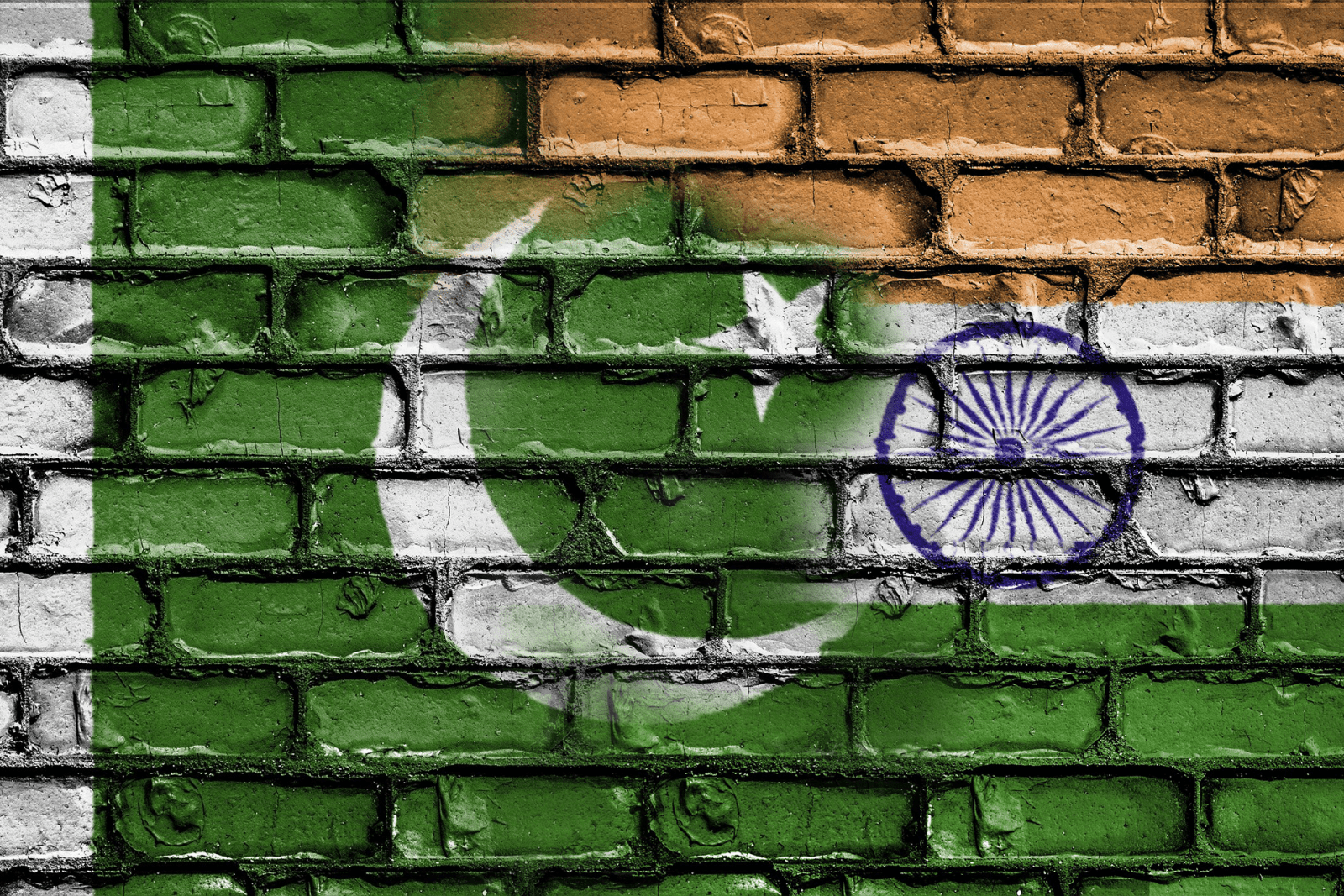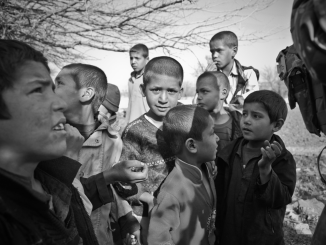
How Different is the “New Normal” from the Old Normal in South Asian Crises?
The summer “fighting season” in Kashmir appears to be heating up. Indian media reports suggest an increase in terrorist group infiltrations over the Line of Control from Pakistan. Cross-border shelling incidents between the Indian and Pakistan Armies are rising in frequency. This surge in violence raises the prospect that a high-casualty terrorist attack on an Indian military base or police forces spurs another military crisis between India and Pakistan.
Tit-for-tat airstrikes during the last major South Asia crisis in February 2019 marked a significant escalation and spurred claims by New Delhi and Islamabad of a “new normal” in their willingness to engage militarily. The “new normal” narrative and the toughness it implies suits the political and military establishments in both states. To the extent such tough talk will be backed up by military muscle, most analysts of the region worry that the next crisis could escalate faster and more dangerously, even risking a nuclear conflict.
However, the 15 months since the February 2019 Balakot crisis mostly resemble the old normal in important respects. Events that might have been expected to provoke military escalation under the “new normal” passed by far less eventfully. Is South Asia really more primed today for war?
The “NEW NORMAL”
On February 14, 2019, after a suicide bomber – an Indian Kashmiri who reportedly had joined the banned, Pakistan-based terrorist group Jaish-e-Mohammad – attacked an Indian police convoy near Pulwama, in the Kashmir region of India, Indian Prime Minister Narendra Modi threatened “a fitting response” against Pakistan. “This is an India of new convention and policy,” he declared. Analysts branded this posture India’s “new normal.” A subsequent cross-border strike by the Indian Air Force on February 26 on a purported terrorist facility near Balakot, in Pakistan’s Khyber Pakhtunkhwa province, gave proof of the policy (setting aside whether the target was actually hit or not). While Indian officials never defined the “new normal” policy, they allowed the impression that India would not be deterred by Pakistan’s nuclear weapons from responding with increasingly punitive military force to future terrorist attacks by Pakistan-based groups.
Pakistan’s tit-for-tat airstrikes on February 27, which Islamabad claimed targeted open ground in the vicinity of Indian military installations, signalled its resolve to match Indian military reprisals. Though Pakistani military planners could not have counted on shooting down an Indian MiG-21 and capturing the pilot during the episode, this additional success fueled claims that Pakistan’s “new normal” is actually “quid pro quo plus.” As with India, Pakistani officials have left ambiguity around the meaning of “plus,” but it seems intended to project a willingness to climb the escalation ladder as a means of restoring deterrence.
Chest-thumpers in both countries seem to welcome the danger implied by the “new normal.” In India, commentators lionized the Balakot strike as a paradigm shift in India’s response to terrorist attacks. In Pakistan, analysts sought to reinforce Indian perceptions that a sharp military escalation could trigger Pakistan’s first use of nuclear weapons early in a crisis. On the strength of these polemics, it is tempting to predict that a next crisis could escalate in new and more dangerous ways – that the “new normal” will be more violent and persistently nearer the nuclear precipice than the old normal.
Beneath the rhetorical heat, however, political and economic imperatives, and the ever-present threat of mutual nuclear destruction, keep a lid on escalation. These forces are apparent in statements from current and former Indian and Pakistani officials and through the actions of the two militaries in the 15 months since the Balakot crisis.
CHANGING PAKISTANI PERCEPTIONS OF A LIMITED CONFLICT
Windows into the perceptions and crisis-thinking of top officials in South Asia tend to be limited, apart from when they periodically issue threats or conduct diplomatic manoeuvres. This pushes analysts (especially those observing from outside the region) to draw heavily on writings and remarks from former officials as indicators of the region’s temperature. A February 2020 speech by Lt. Gen. (retd) Khalid Kidwai, the former head of Pakistan’s Strategic Plans Division, is noteworthy in this regard.
In remarks focused mainly on the Balakot crisis, Kidwai hammered repeatedly on the centrality of nuclear weapons to escalation calculations. Pakistan’s nuclear weapons, Kidwai asserted, “deterred India from expanding operations beyond a single unsuccessful airstrike” at Balakot, through the “cold calculation that nuclear weapons come into play sooner rather than later.” He warned that “while it may be easy [for India] to climb the first rung on the escalatory ladder, the second rung would always belong to Pakistan, and that India’s choice to move to the third rung would invariably be dangerously problematic in anticipation of the fourth rung response by Pakistan.” Finally, he cautioned that the Indian air strike “was playing with fire at the lower end of the nuclear spectrum and Armageddon at the upper end.”
If nuclear deterrence sounded the base notes in Kidwai’s speech, his observations on India’s “irrational, unstable and belligerent internal and external policies” provided the shrill tones. He railed against the “extremists and religious fanatics of the RSS and the BJP [who] are the real time state and the government,…and in firm control of India’s nuclear weapons, with a track record of strategic recklessness and irresponsibility.” He also castigated Indian military leaders as “too meek, or equally reckless, to offer sound professional advice” and for giving in to the “irrational pressures of their political masters.”
Warnings of “Hindustan’s quest for regional domination” could be read as part of the battle for international public opinion in South Asia. However, the juxtaposition of Kidwai’s arguments for the success of Pakistan’s nuclear deterrence with his charges of “strategic recklessness” by India’s “ideologically driven leadership” suggests real concern about the “irrationality” of Indian actors in future crises. Modi appears to personify the threat on which Pakistani strategic culture is built and perpetuated by Pakistan’s security establishment. Indeed, Modi features prominently in the Pakistan Army’s 2020 Green Book, which from the first page argues, “Mr Modi has not only endangered the immediate neighbourhood, but has also raised the ante for the entire World.”
INTERPRETING MODI
Since 2002, and perhaps earlier, military planners in Pakistan could count on Indian leaders exercising crisis restraint. There seemed to be consensus in New Delhi that engaging in military conflict with Pakistan, regardless of the cause, was detrimental to India’s larger economic and global status-building project. (Pakistanis may not agree with this assessment, but the record of crises between 2002-2016 appears to bear it out, as do many Indian narratives, including from critics of the current ruling party.) Indian restraint made the effectiveness of Pakistan’s deterrent a relatively foregone conclusion, no matter how Pakistan postured its nuclear arsenal.
Pakistani analysts argued that “full spectrum deterrence” – the posturing of nuclear weapons for use in tactical, operational, and strategic roles – had closed the space for India to conduct even limited (proportionate) military operations against Pakistan. However, Indian restraint in countering terrorist attacks even as provocative as the Lashkar-e-Taiba assault on Mumbai in November 2008, may have owed more to the outlook, priorities, and disposition of Indian leaders than to Pakistan’s deterrent. Indian governments prior to Modi sought to avoid war for many reasons and used the risks of escalation to a nuclear conflict to justify their restraint. The military space for Indian reprisals always existed, which India’s very limited Balakot air strike demonstrated, even if the strike was neither as successful or paradigm-making as Indian advocates of the “new normal” profess.
Yet the real fear in Pakistan is that Modi’s rhetoric and domestic policies during and after his May 2019 re-election indicate a level of zealotry and irrationality that might lead to deterrence failure. Modi’s campaign-trail allusions to a Qatal Ki Raat (night of the murder) and blustery warnings that India isn’t saving its nuclear weapons for Diwali could be dismissed as electioneering. But subsequent decisions by Modi to change the legal and political status of disputed territory in Kashmir and to target the citizenship of Indian Muslims are interpreted as state-directed bigotry that will also infuse India’s national security institutions.
The question is whether Modi’s nuclear threats, coupled with perceived successes in implementing anti-Muslim policies in India, are likely to embolden more aggressive action against Pakistan, with attendant crisis-escalation risks.
FROM BALAKOT, A RETURN TO CROSS-BORDER SHELLING
India’s behaviour during and since the Balakot crisis does not directly answer this question, but it provides some clues. First, India’s air operations at Balakot, though without precedent in the South Asian nuclear age, were far less forceful than many in India had called for. As Kidwai himself pointed out, a single, standoff airstrike is orders of magnitude less escalatory than, for example, an Indian “Cold Start” ground incursion onto Pakistani soil. Indian planners appear to have taken calculated targeting and operational risks.
Second, an uptick in violence across the Line of Control in Kashmir in April 2020 suggests a resumption of the usual hostilities, not a new paradigm. Both sides blame each other for initiating the actions – with India arguing it is attempting to interdict infiltration by terrorists – and for the indiscriminate targeting of civilians. If Modi was truly emboldened, why did the Indian government not use accusations of terrorist infiltration for a Balakot 2.0 strike, or something even more damaging? And if Pakistan was truly concerned about escalation, and that Modi is a madman with an itchy trigger finger, would it not do more to shut down terrorist groups whose actions in Kashmir might give India a pretence to attack?
Third, for all its machismo, the Modi government has come in for criticism from Indian strategists for not doing more to translate the Balakot “new normal” into a more consistent and firm policy towards Pakistan. For example, one analyst assesses that India’s 2020 resumption of cross-border shelling reveals that Modi remains interested in military action only for show, rather than deterrent effect. “New Delhi should have used every serious terrorist attack as an excuse for escalation, and any military response from Pakistan as an excuse for further escalation,” he argues. The Indian government’s continued low tolerance for risk of war with Pakistan may frustrate some Indian observers but, at the same time, indicates that rational (electoral) calculations underlay Indian leaders’ bellicose rhetoric.
Seen from this light, Kidwai’s doubling down on nuclear deterrence is a reflexive response. (And motivated by point-scoring, given his observation that after years of public handwringing by the international community over the security of Pakistan’s nuclear weapons, global powers have been remarkably silent about Modi’s nuclear threat mongering.) Kidwai’s remarks also frame the bind that Pakistan is now in. Islamabad can be responsible and measured in its responses in the face of Indian recklessness, yet the world continues to side with India. Though Pakistan’s nuclear weapons may, as Kidwai argues, “bring the international community rushing into South Asia to prevent a wider conflagration,” they do little to dissuade an aggressive, bigoted, and ideologically motivated Indian leadership from taking calibrated military actions against Pakistan. (For Modi, whether these actions harm Pakistan may be less important than their public relations value to fire up his domestic political base.)
Nuclear weapons will continue to deter major war with India and catalyze international crisis intervention, as they have always done. Yet, if the “new normal” is not substantially more dangerous and prone to a nuclear exchange than the old normal, Pakistan’s nuclear weapons do little to diminish or deter the endemic threats lurking on Pakistan’s doorstep – economic failure, political disarray, international isolation. Such weaknesses are far easier for India to attempt to exploit than any perceived gaps in Pakistan’s military capabilities.
AN ENDURING OLD NORMAL
For sure, the use of airpower in the Balakot crisis and the purported threats of missile strikes at the height of the 2019 crisis were deeply concerning. There was good fortune along the way that accidents or other possible sources of inadvertent escalation did not materialize.
Yet, the Balakot crisis fizzled rather quickly. Indian and Pakistani leaders made deliberate targeting and response calculations that (luckily) did not result in major casualties. Both sides sought a public relations victory with domestic and international audiences, then moved to de-escalate. There is sparse evidence that leaders in either capital saw benefit or opportunity in furthering the crisis, let alone in a more expansive fight.
The next time the Indian government decides to react to a provocation attributed to Pakistan, New Delhi may try again to achieve what it seemingly didn’t at Balakot: the successful targeted killing of terrorists inside Pakistan. Such a strike would likely cause great injury to Pakistan’s pride, but not grievously damage the state. In response, Pakistan could do “quid pro quo plus,” but the costs to India to receive such retaliation remain low. If the crisis stops there, the main fight again will be through the chyrons splayed across nightly television talk shows, not on the battlefield.
It remains the case that a major war favours neither the domestic politics nor international aspirations of either India or Pakistan. In this respect, though perhaps more worrying and occasionally violent, the “new normal” may not be so different from the old. With a decisive military victory out of reach, and the shadow of nuclear annihilation ever present, risking escalation beyond very limited reprisals brings no gain.
(Disclaimer: Strafasia.com provides an open platform for objective and unbiased debate on Asian security issues. The views expressed by individual authors are their own and should not be seen as an endorsement by Strafasia.com)
![]()




The offence by India against Pakistan during the Balakot crisis in the dead of the night is another example of their so-called chivalry. History is full of instances when India crossed the border in the night but was unable to hurt Pakistan. Pakistan may need to step up its diplomatic game to bring key international capitals into the loop about India’s aggressive manoeuvres and rhetoric that have no place in bilateral relations between two neighbours. Conflict suits no one, least of all two countries armed with nuclear weapons. India should dial down this posturing without delay.
Toby Dalton’s comment is interesting and contains kernels of wisdom and truth. However, Toby like his US cohorts has an over simplistic understanding of how indigenous freedom movements take hold and operate, and violence against the oppressor is one of the accepted tools. Decolonization was achieved after the two world wars by revolts against colonizers including use of force. Colonizers use force to maintain the status quo and liberation forces use force to fight back. To characterize use of force by freedom fighters as terrorism is plain wrong and runs counter to historical evidence. Were the tea part rebels in Boston terrorists, the Haganah and Irgun, the ANC, the PLO terrorists > not in the eyes of their peoples. US analysts tend to be over eager to accept tbe Indian narrative on Kashmir and South Asian security > and it is a pity that the establishment in Pakistan looks up to such fundamentally flawed analyses > furthermore, the US has been and is an abettor to terrorism when it supported anti-Castro and anti-Allende forces, support Israel in oppressing the West Bank and Gaza, and so on.
India is distracted and the Pakistani leadership know that it’s a good time to push terrorists across the border.
The new normal since March 2020 is that India is engaged in containing and reducing COVID-19. This has been a task for developed economies larger than India’s, but India has had success in keeping the infection rate below 4.5% and a low CFR compared to developed countries.